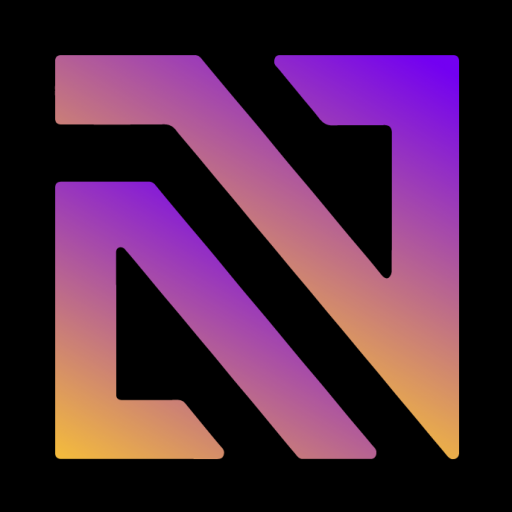FAQ
Most frequent questions and answers
A digital interactive mirror system integrating a semi-reflective glass panel, a vertical LED display, a media player, and a camera sensor. The system enables real-time overlay of digital content—including virtual try-ons, augmented reality elements, avatars, or generative AI outputs—onto the user’s reflection. The media player handles content rendering and playback, while the camera provides motion tracking, image capture, and user interaction, supporting personalization, analytics, and interactive experiences.
Generative AI is a type of artificial intelligence that learns patterns from existing data and then uses that knowledge to create new, original content. This content can include text, images, videos, music, 3D models, and even code. Unlike traditional AI, which primarily analyzes or classifies data, generative AI produces outputs that mimic human creativity, making it useful for art, design, storytelling, simulations, and virtual experiences.
Augmented reality (AR) is the integration of digital information with the user’s environment in real time. Unlike virtual reality (VR), which creates a totally artificial environment, AR users experience a real-world environment with generated perceptual information overlaid on top of it. Augmented reality is used to either visually change natural environments in some way or to provide additional information to users. The primary benefit of AR is that it manages to blend digital and three-dimensional (3D) components with an individual’s perception of the real world. AR has a variety of uses, from helping in decision-making to entertainment. In other words augmented reality (AR) is a technology that superimposes digital information or objects onto the physical world. AR can be experienced through smartphones, tablets, or specialized glasses that use cameras and sensors to track a user’s environment and overlay digital content on top of it.
Digital fashion refers to clothing and accessories that are designed and created exclusively in digital form, without physical materials or production. Digital fashion can exist in various forms, such as 3D models, animations, and virtual reality experiences.
Digital clothing is typically created using 3D modeling software, where designers can create a digital version of a garment and then apply textures and colors to it.
There are many areas, but digital clothing is primarily used in virtual environments such as video games, social media platforms or Web3 based Metaverses. The secondary market is E-commerce where digital garments are converted into interactive AR-based virtual try-On feature. It can also be used in digital fashion shows, where models wear digital clothing on a virtual runway.
Digital clothing offers a more sustainable alternative to physical clothing, as it doesn’t require the production and transportation of physical garments. It also allows for greater creativity and experimentation in fashion design, as there are fewer limitations to what can be created in a virtual environment.
Virtual Try-On is a technology that allows consumers to visualize and try on clothing and accessories in a digital environment. This technology uses augmented reality or virtual reality to superimpose digital images of clothing onto a user’s live camera feed or 3D avatar, enabling them to see how the clothing would look on their body before making a purchase.
To try on augmented reality clothing, you need an AR-enabled device and an app that supports AR clothing try-on. Once you have the app installed, you can select the clothing item you want to try on, point your device’s camera at yourself or to a mirror, and the clothing item will appear overlaid on your body.
Virtual try-on technology provides a more accurate and convenient way for consumers to see how clothing and accessories would look on their body without physically trying them on. This technology can save time, reduce the need for returns, and increase consumer confidence in purchasing items online.
Virtual try-on technology can help fashion retailers reduce costs associated with physical store displays, mannequins, and inventory management. It can also increase customer engagement and conversions by providing an immersive and interactive shopping experience.
Augmented reality is used in the fashion industry for virtual try-on experiences, as well as for creating immersive brand experiences and interactive product displays. AR can also be used to showcase how clothing and accessories are made, highlight sustainable production methods, and provide educational content to consumers.
Digital fashion refers to clothing and accessories that are designed and created exclusively in digital form, without physical materials or production. Investing in digital fashion can provide your company with new opportunities to reach a wider audience, reduce costs associated with physical production, and create innovative and immersive brand experiences for your customers.
Implementing virtual try-on technology can help your company reduce costs associated with physical store displays, mannequins, and inventory management. It can also increase customer engagement and conversions by providing an immersive and interactive shopping experience. Virtual try-on technology can also provide valuable data and insights about your customers’ preferences and behavior.
Web3 (also known as Web 3.0 or the decentralized web) is a term used to describe the next generation of the internet, which is focused on creating a more decentralized and open web experience. Web3 aims to enable a more peer-to-peer and decentralized internet, where users have greater control over their data and online identity.
Supply Chain Transparency: The fashion industry has a complex supply chain that can be difficult to track. With Web3 technologies such as blockchain, it is possible to create a transparent supply chain. By recording every step of the supply chain on a blockchain ledger, it becomes easy to track the origins of a product and ensure that it is ethically and sustainably made. Consumers can use Web3 applications to verify the authenticity of the products they purchase. On the other hand Web3 technologies such as virtual reality and augmented reality can be used to create digital fashion items that can be worn in virtual worlds or shared on social media. This creates new opportunities for fashion brands to reach consumers and showcase their designs.
NFTs, or non-fungible tokens are part of Web 3.0 that play with the idea of uniqueness in digital goods. You can exchange a fungible asset for goods or assets of the same kind. However, you cannot readily exchange a unique, non-fungible asset, for something equivalent. While currencies like Bitcoin represent fungible crypto assets (fungibility is crucial for money), other types of digital assets may require different properties. When talking about unique goods like jewelry, art, land, or collectibles, each unit represents different qualities that may affect its value. NFTs, or non-fungible tokens, were created with the spirit of these unique assets in mind. One NFT cannot be exchanged for another NFT because each token possesses a digital signature or represents a unique property that makes it non-equivalent to another. Please note that we are using NFTs as certificates, not for trading, selling, or buying for speculative purposes in the crypto space.
NFC stands for Near Field Communication, which is a wireless technology that allows devices to communicate with each other when they are placed close together, typically within a few centimeters. NFC technology is commonly used for contactless payments, transportation ticketing, and access control systems. It enables users to transfer data and make transactions by simply holding their NFC-enabled device near a compatible terminal or tag. NFC technology is becoming increasingly popular in smartphones, wearables, and other connected devices, and is expected to play a significant role in the growth of the Internet of Things (IoT). NFC chips are easily used to identify NFT based digital ownership of any physical item.

